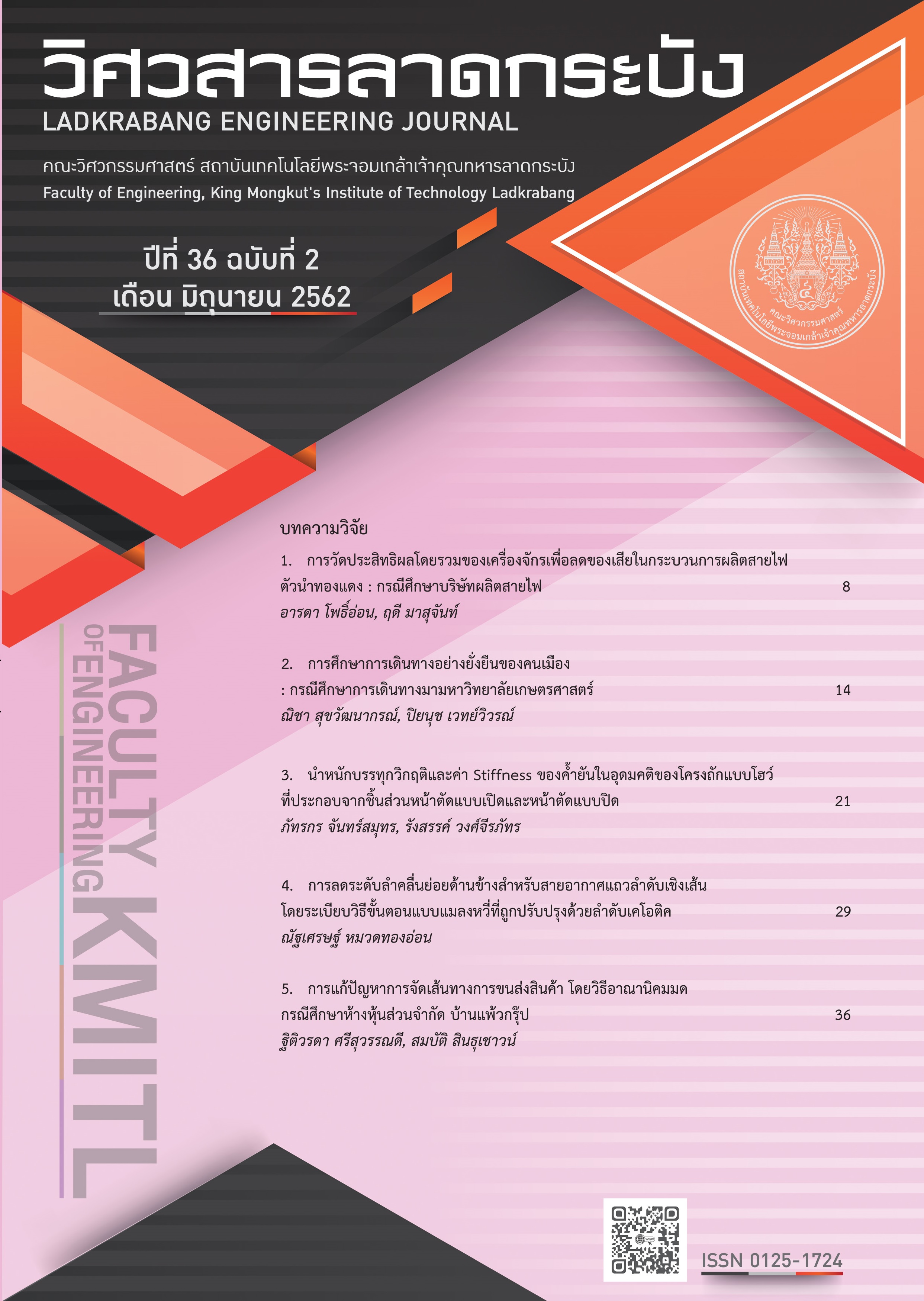Critical Load and Ideal Brace Stiffness of Howe Trusses Fabricated from Opened and Closed-Section Truss Members
Keywords:
Buckling load, Buckling mode shape, Ideal brace stiffness, Howe trussAbstract
Truss structures are susceptible to lateral deflection and torsion similar to column and beam. This research studied the critical load and brace stiffness of Howe trusses fabricated from opened and closedsection members and subjected to point load at midspan with and without bracing at midspan top chord. The mathematical models of the trusses were created and Eigenvalue Buckling Analysis was performed. According to the study, it was found that critical load has nonlinear relationship with brace stiffness and factors affecting the buckling load and brace stiffness include span length, equivalent out-of-plane moment of inertia, size and type of the cross-sections. Increasing of span-to-depth ratio results in decreasing of critical load and ideal brace stiffness, and number of panel and angle of diagonal members slightly affect the buckling capacity. Increasing of chord sizes is more effective than increasing size of web of truss members in both opened and closed-section trusses. Additionally, the critical load increases with the increase of equivalent out-of-plane moment of inertia and has linear relationship with PcrLb 2. The truss with closed-section members has higher critical load than opened-member truss at the same equivalent out-of-plane moment of inertia.
References
ANSYS, “ANSYS Version 15.0,” ANSYS Inc., Canonsburg, PA, USA, 2014.
Eurocode 3, “Design of Steel Structures,” Part1.1: General rules and rules for buildings, ENV 1993 1-1, CEN, Brussels, 1992.
Winter, G., “Lateral Bracing of Columns and Beams,” Journal of the Structural Division, ASCE, Vol. 84, No. ST2, March, 1561-1 – 1561-22, 1958.
Horne, M. R., “The Elastic Lateral Stability of Trusses,” Structures Engineer. 38(5): 147-155, 1960.
Iwicki, P, “Comparison of classical Winter's bracing requirements of compressed truss chord with stability analysis of 3D truss-model,” Pamm. 9(1): 247-248, 2009.
Jankowska-Sandberg, J. and J. Kolodziej, “Experimental study of steel truss lateral–torsional buckling,” Engineering Structures. 46: 165-172, 2013.
Pitiphon Sawaengdi, “Equivalent Out-of-Plane Moment of Inertia for Steel Howe Truss,” Master Thesis, Kasetsart University, 2016.
PN-90/B-03200, “Steel structures,” Design rules, Polish standard, 1990.
Seaburg, P.A. and Carter, C.J., “Torsional Analysis of Structural Steel Members,” Steel Design Guide Series No. 9, AISC, Chicago, IL, 1997.
Yura, J. A., “Fundamentals of beam bracing,” Engineering Journal-American Institute of Steel Construction. 38(1): 11-26, 2001.
Downloads
Published
How to Cite
Issue
Section
License
The published articles are copyrighted by the School of Engineering, King Mongkut's Institute of Technology Ladkrabang.
The statements contained in each article in this academic journal are the personal opinions of each author and are not related to King Mongkut's Institute of Technology Ladkrabang and other faculty members in the institute.
Responsibility for all elements of each article belongs to each author; If there are any mistakes, each author is solely responsible for his own articles.






